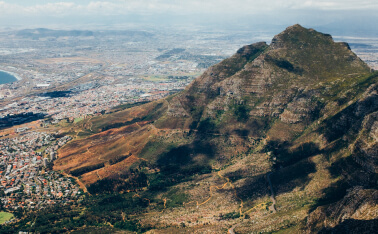Strong demand for cosmopolitan De Waterkant
Category Property News
The quaint enclave of De Waterkant has been substantially transformed over the past decade and is now regarded as one of the most fashionable suburbs in Cape Town, with investors clamouring to own a slice of this historical area.
Lew Geffen, chairman of Lew Geffen Sotheby’s International Realty, says: “Its proximity to the CBD and V&A Waterfront, village atmosphere with gourmet hole-in-the-wall coffee shops and world class restaurants, makes De Waterkant highly desirable.
“Most of the properties in De Waterkant above Somerset Road are historical buildings which fall under the strict stipulations of Heritage and there is no space for further development in the small area, so property owners are holding onto their assets, resulting in a critical stock shortage.”
So scarce are these historical properties on the market that in 2014 only two transactions took place here, and not a single sale was recorded in the first quarter of 2015.
Geffen says that property owners in De Waterkant have good reason to hang onto their investments.
“In 2010 the average sale price was R2.3 million, by 2012 it had risen to R3.9m and in 2014 the average of the two properties sold was R6.35m.”
Simony Santos, area specialist for Lew Geffen Sotheby’s International Realty, says that the market is considerably different below Somerset Road, where new developments have transformed the lower end of De Waterkant with the focus being on mixed-use developments with a strong “live, work, play” ethos.
Many of the original small buildings have been bought and demolished to make way for large sectional title properties such as The Rockwell, The Mirage, Harbour Edge, Harbour Terraces and The Hudson, all of which offer 24-hour security and secure parking and several also have retail and offices components.
Here the market is much more active and 26 properties changed hands in 2014, with eight sales being recorded in the first quarter of 2015.
The average property price for De Waterkant in 2014 was R2.518m, and the combined value of property sold during the year was more than R70m in total.
Santos says: “These properties are ideal for investors looking at entering the short term rental market because of the area’s proximity to the CBD, the Cape Town International Convention Centre (CTICC), V&A Waterfront and major businesses headquarters.”
She says that despite the prime location and potential of almost year-round occupancy in the short term rental market, entry level prices are still accessible with two-bedroom apartments priced at around R2.5m and one-bedroom apartments starting at R1.7m.
“Although modern, the newly developed area is still very much a part of De Waterkant and, enjoying the same buzz of sidewalk cafes, restaurants, bars and eclectic shops for which the suburb is renowned, lower De Waterkant retains the village atmosphere that inspired the area’s comparison to New York’s Greenwhich Village,” says Santos.
De Waterkant lies on the slopes of Signal Hill, between the Atlantic seaboard and the bustling city centre, and has a history that dates back to the 1700s. Most of the original houses were erected by slaves from the east and by free natives.
Before the promulgation of Group Areas Act in 1956, De Waterkant was a vibrant area where people of all races, cultures and religions peacefully co-existed and, over the past decade, De Waterkant has once again become a cosmopolitan and multi-cultural area.
Very popular with Cape Town’s gay community and young professionals, De Waterkant is a self-sustaining suburb with boutique hotels and guesthouses, restaurants and diverse stores as well as its own lifestyle shopping centre, The Cape Quarter, says Santos.
Author: Lew Geffen Sotheby's International Realty

 Featured
Featured
 On Show
On Show








